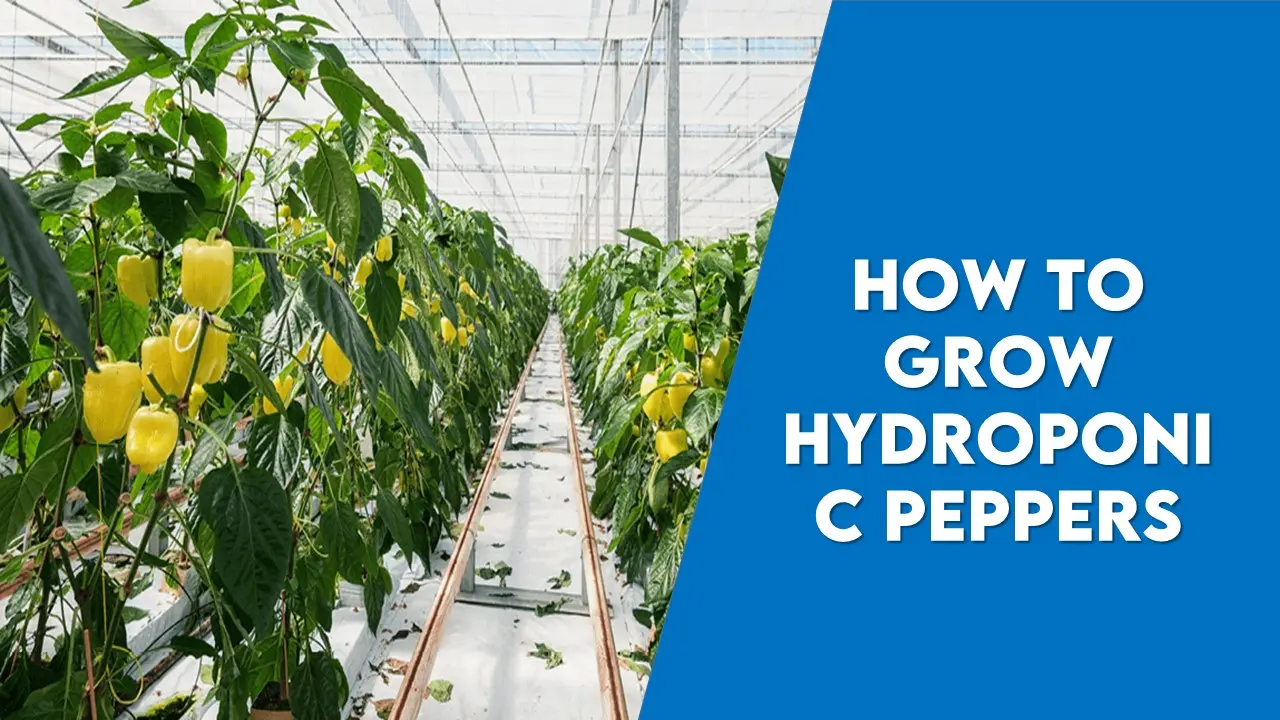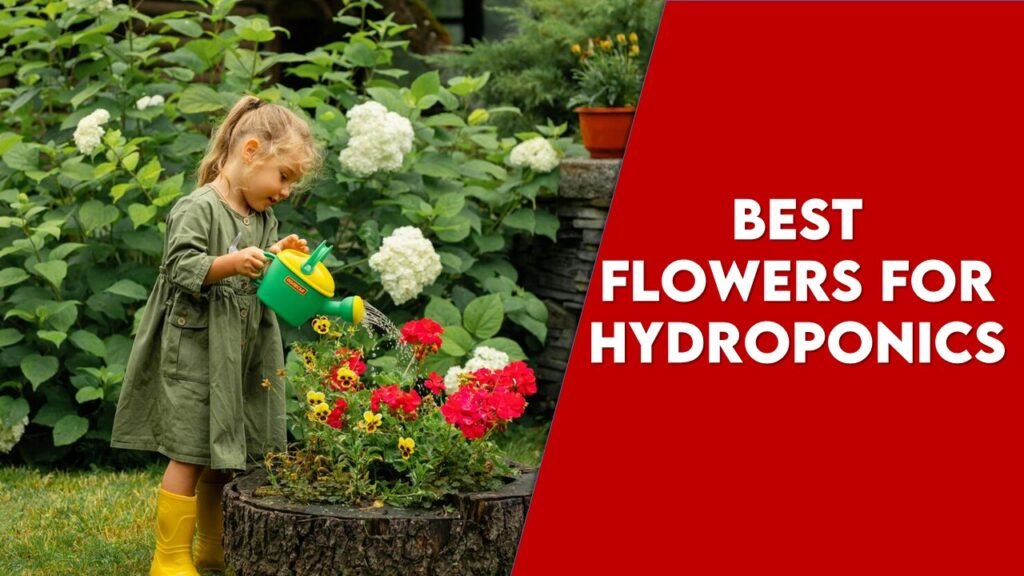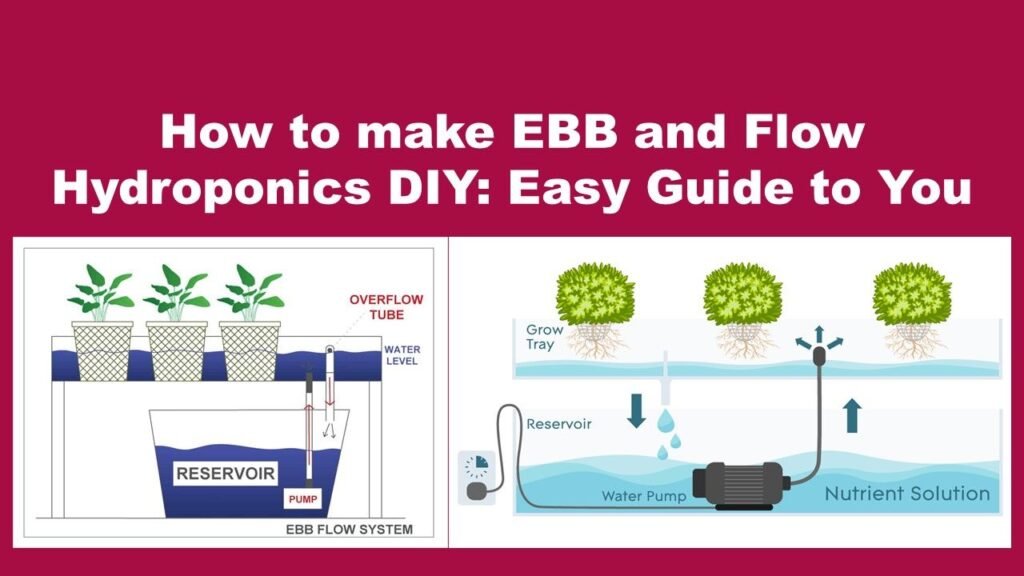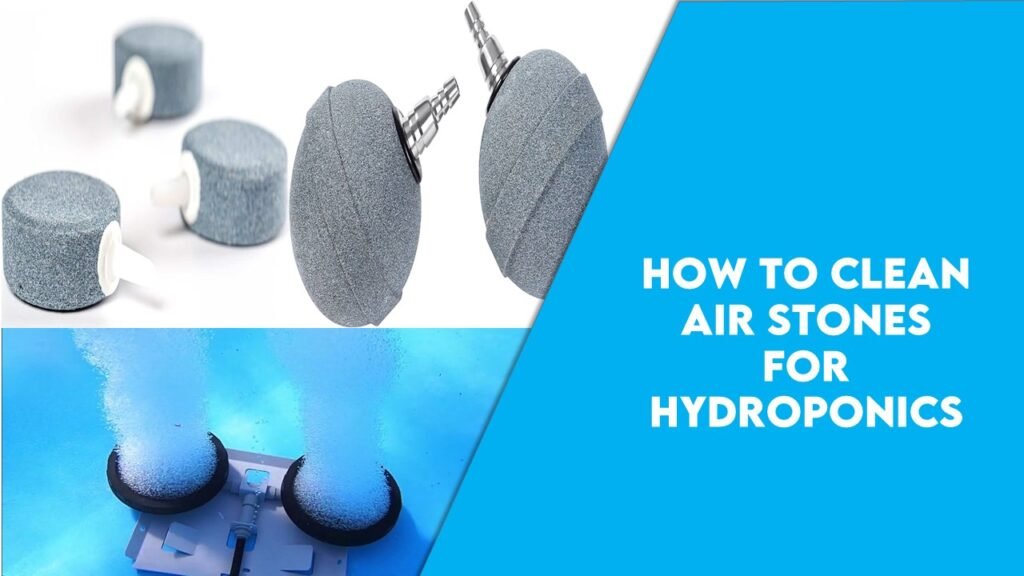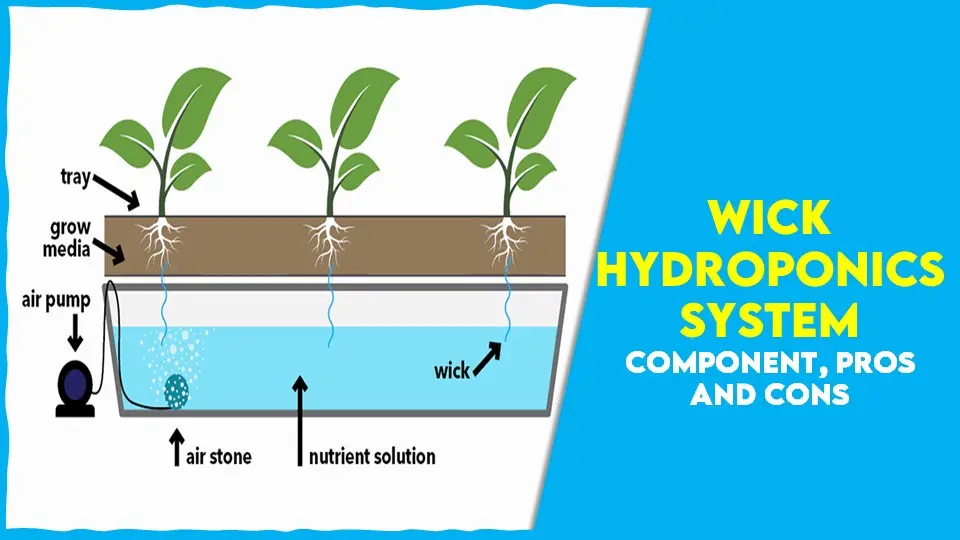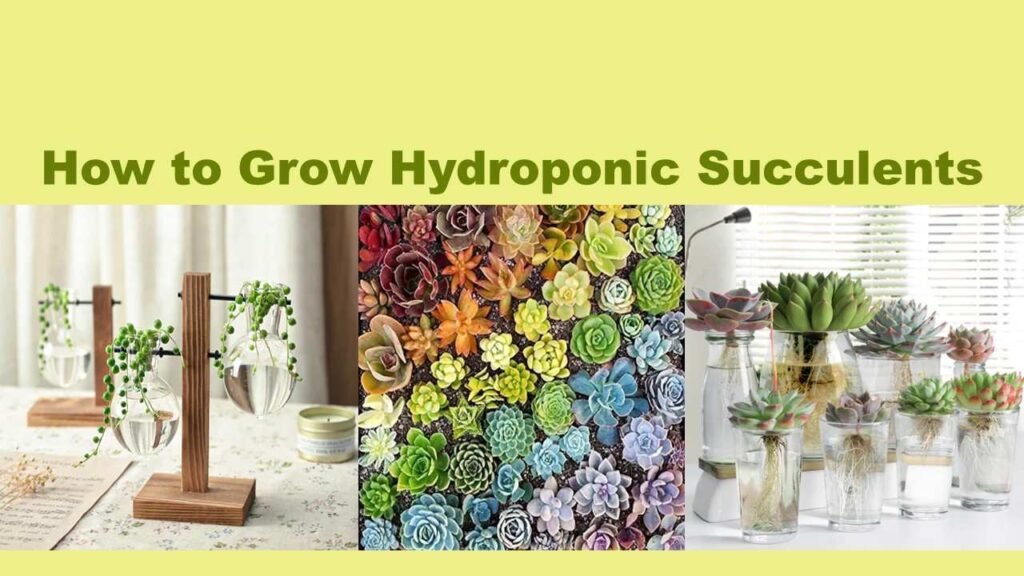How to Grow Hydroponic Peppers : Colorful Grace in Farm
Taxonomically identified as Capsicum annuum, these plants, belonging to the Solanaceae family, originated in Central and South America but are now cultivated worldwide. They display a compact growth habit characterized by dark green, oval leaves and delicate white flowers, eventually giving rise to bell-shaped fruits, technically classified as berries, that exhibit a spectrum of colors from green to red, yellow, orange, and even purple depending on the variety and ripeness. Let us discuss all the pros and cons of growing peppers in hydroponics as well as how to grow hydroponic peppers.
Importance of Pepper:
Bell pepper is one of the most important vegetable crops in India as its use is very diversified and in a wide spectrum. It is used in many industries, the most successful is the food industry where its different colors are utilized in different manners.
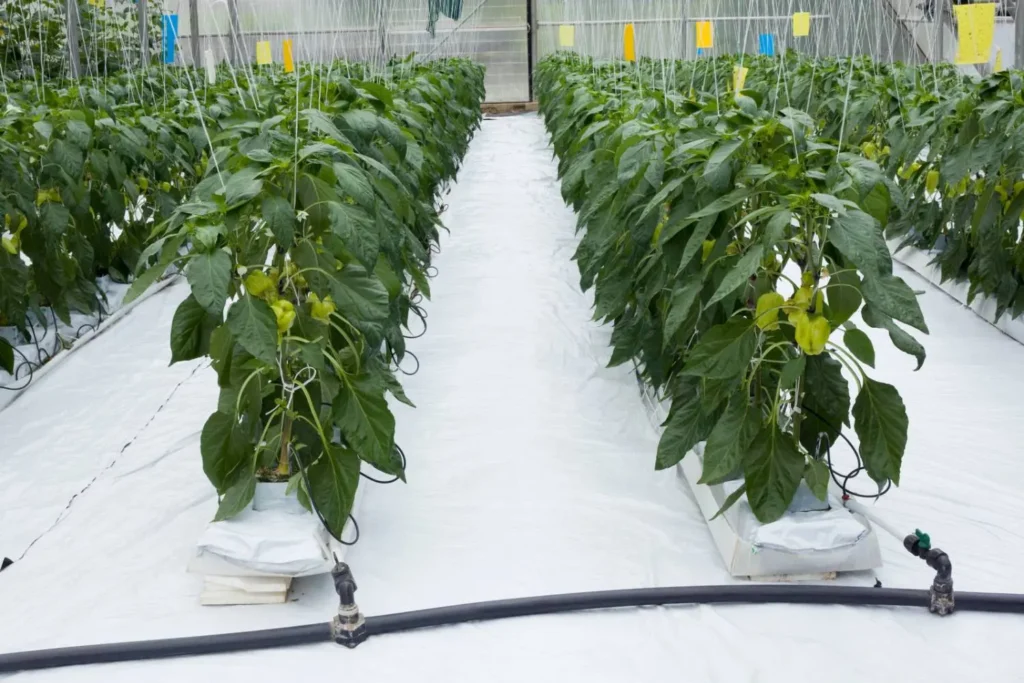
image source: humboldtssecretsupplies
Nutritional Importance:
| Nutrient | Amount per 100g | Importance |
| Vitamin C | 128 mg | Supports immune function, acts as an antioxidant, promotes healthy skin |
| Vitamin A | 3131 IU | Essential for vision, immune function, and proper growth and development |
| Vitamin K1 | 7.4 µg | Important for blood clotting, bone health |
| Vitamin B6 | 0.29 mg | Involved in metabolic processes, including neurotransmitter synthesis, brain function |
| Fiber | 2.1 g | Promotes digestive health, prevents constipation, may reduce the risk of chronic diseases |
| Potassium | 211 mg | Important for electrolyte balance, nerve function, muscle contraction, and heart health |
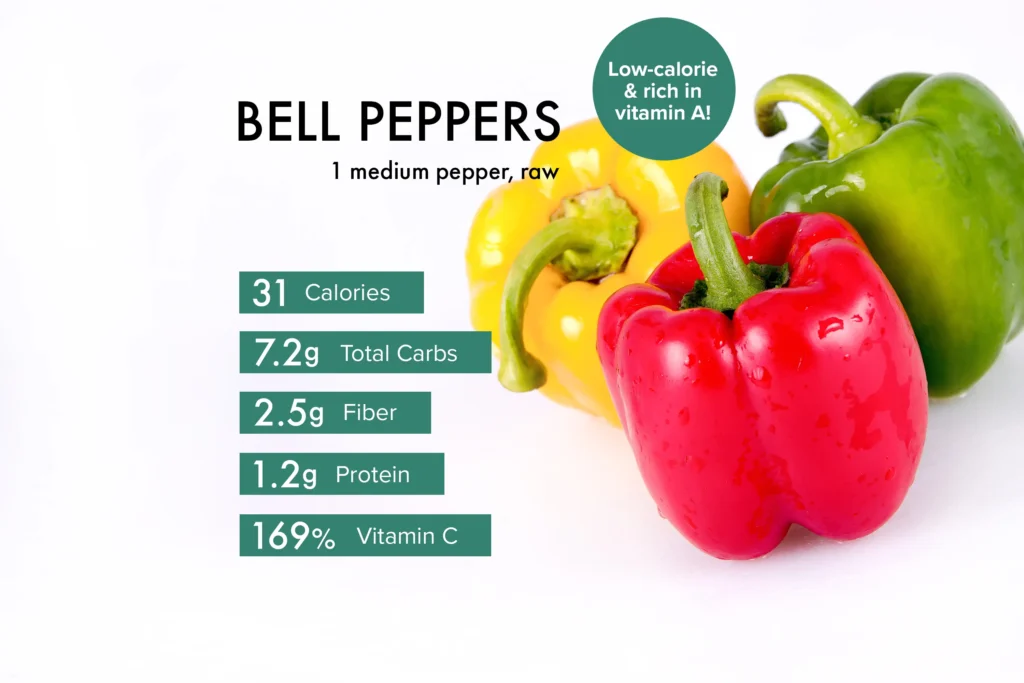
image source: livestrong
Why Hydroponics is Best Choice for Bell Peppers:
Peppers are best choices for hydroponics as they are shallow rooted and directly uptake nutrients and water from solution. Balancing the amount of ph, moisture, light, and nutrients gives excellent growth to plants. This balance is difficult to achieve in an open field and can be maintained in a hydroponic system.
Faster Growth and Higher Yields:
In hydroponics the environment and nutrients are under control by the farmers. As the climate is not a factor and by providing optimum temperatures at different growth stages gives rapid growth.
Indoor Gardening:
Hydroponics allows a farmer to set up their hydroponic farm in an indoor infrastructure. It allows farmers to go for year round production. Farmers having less land can also go for hydroponics to get more profit from small land (in metropolitan cities).
Bell Peppers cannot Tolerate Water Logging Conditions:
In hydroponics this will not happen as a full control on water can assure the thing. Balance is also essential for proper shape and texture of leaves.
Full Control on Environment and Nutrition:
Conditions like humidity, light, pH, temperature are under check by the farmer and can be maintained. The optimum pH required for growing bell pepper is 5.5 to 6.5. This ensures the nutrients are absorbed by the plant. These conditions are under control in the hydroponic system.
Less Chances of Infection:
This system prevents the plants from the soil borne pathogens and infections. The use of different pesticides can be excluded by maintaining aseptic conditions inside farms. Also weeds are not a concern in the hydroponic system as compared to soil cultivation. There is no competition for bell pepper plants for any nutrition and water.
Pepper Varieties Suitable for Hydroponics:
In the process of how to grow hydroponic peppers this step is crucial because of some difference in varieties which is used in hydroponics and in open fields.
| Variety | Description | Suitability for Hydroponics |
| California Wonder | Classic, large blocky fruits, excellent flavor | Well-adapted, vigorous growth, high yields |
| King Arthur | Hybrid, large thick-walled fruits, disease-resistant | Suitable for hydroponics, uniform fruit size |
| Yolo Wonder | Heirloom, uniform blocky fruits, thick walls | Favored by hydroponic growers, good for stuffing or slicing |
| Ace | Early maturity, high yields, medium-sized peppers | Preferred choice for hydroponics, versatile for fresh or cooked |
| Sweet Chocolate | Dark brown to chocolate-colored fruits, sweet | Adds diversity to crop selection, performs well in hydroponics |
| Orange Sun | Vibrant orange color, sweet flavor | Produces high-quality fruits, attractive market appeal |
How to Grow Hydroponic Peppers
Site Selection or Indoor Infrastructure:
In how to grow hydroponic peppers the first step it is to select a well site having all the facilities like electricity supply, water supply which are required in the system. It is also taken into consideration that fresh fruits have a small shelf life so that the site must be near to the market. So that it can reach the consumers with its freshness.
Selection of Hydroponic System:
Peppers does not require any unique hydroponic setup, it can easily grow in any of the hydroponic systems but preference will be given to the one which is space efficient. Deep Water Culture (DWC) involves suspending plants in aerated nutrient water, particularly suitable for larger bell pepper quantities. Nutrient Film Technique (NFT) efficiently utilizes thin nutrient films to nourish roots, while Ebb and Flow periodically floods and drains the growing medium. Vertical hydroponic systems stack layers for space efficiency in indoor or limited-space setup.
Germination and Transplanting of Seedlings:
Using a suitable growing medium, germinate seeds separately in different containers or plug trays. It takes a few days to germinate, usually 10 to 14 days. After germination it is transplanted after 30 to 45 days. These are transplanted from the container to the hydroponic set up having nutrient solution.
Nutrient Solution for Hydroponic peppers :
For hydroponic peppers the nutrients, water, minerals, and required elements are given through a nutrient solution which is the food of plants grown in hydroponics. Micro and macronutrients are the major parts of the nutrient solution. The deficiency of any micro and macro nutrients significantly affect the growth of the plants. For water the nutrient solution is a liquid medium and water is absorbed readily from the solution by plants.
Management of the Hydroponic Setup
Adjustment of pH and EC Levels:
For peppers growing without soil in water, make sure the special liquid food has a pH between 5.5 and 6.5 – this helps the plants get their food easily. Also, check how strong the food is using EC or PPM, which is like checking if the food is too weak or too strong. These levels put the base of successful venture of “how to grow hydroponic peppers. During the growing stage, the food’s strength (EC or PPM) should be between 1.2 and 2.0, and during the flowering stage, a bit stronger, between 2.0 and 2.5.
Lighting Conditions:
To set up lighting, use LED or fluorescent grow lights with a balanced full spectrum that includes both blue and red wavelengths. Place the lights 12-18 inches above the plants, providing 12-16 hours of light per day during the vegetative stage. Maintain a consistent light schedule using a timer for automation, ensuring 8-12 hours of darkness. Arrange the lights for uniform coverage, and monitor the plants’ response, adjusting the light intensity or distance accordingly.
Temperature Requirement:
To help hydroponic peppers grow well, it’s important to keep the place not too hot or cold. The optimum temperature in hydroponics should be between 20°C to 25°C. This is the optimum range which provides the right environment for full growth. Also, it’s good to have some humidity in the air, around 50% to 70%, but not too much. Keep the temperatures steady, not changing a lot, so the plants don’t get stressed. Make sure there’s fresh air moving around to avoid problems with bugs and sickness. so it plays important role in how to grow hydroponic peppers.
Pests and Disease Control:
Regularly check your plants for tiny bugs like aphids or spider mites, and keep an eye out for signs of diseases like strange spots, color changes, or drooping leaves. If you see any problems, take action quickly by getting rid of the affected parts to stop the issue from spreading. If you’re bringing in new plants, keep them separate for a short time to avoid introducing potential pests or diseases. Keeping your hydroponic system clean by removing debris and maintaining good hygiene will help your bell pepper grow well. How to grow hydroponic peppers without pest management have not a good possibilities.
Different Stages of Growth in Pepper and Duration :
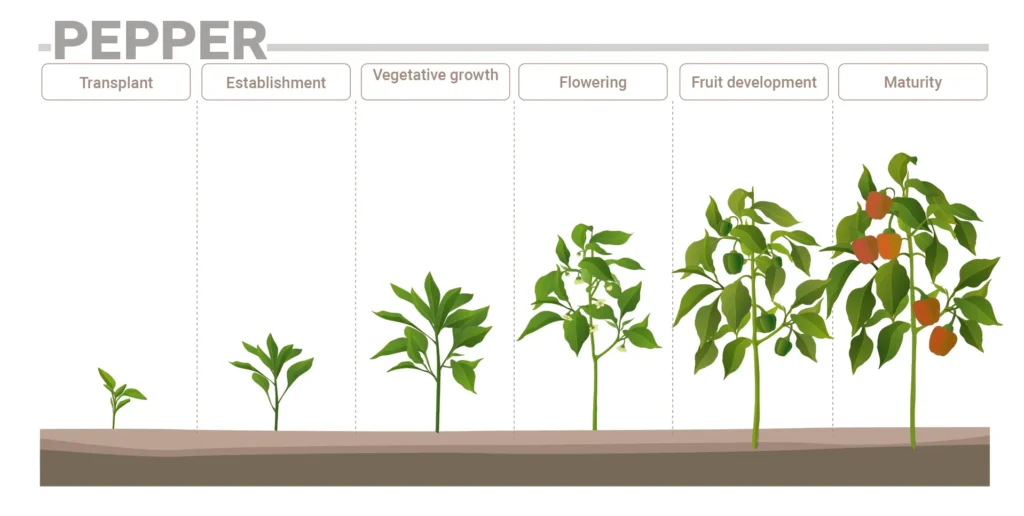
image source: sqmnutrition
- Germination (7-14 days):
- Bell pepper seeds germinate within 7 to 14 days under optimal conditions. During this stage, seeds absorb water and nutrients, and the embryonic plant begins to emerge from the seed coat.
- Seedling Stage (2-4 weeks):
- Once the seeds have germinated, they develop into seedlings with the first true leaves.
- Vegetative Growth (4-8 weeks):
- During the vegetative stage, bell pepper plants focus on leaf and stem growth. In hydroponic systems, vegetative growth can be accelerated compared to soil-based cultivation due to optimal nutrient availability.
- Flowering (6-10 weeks):
- Bell pepper plants typically begin to flower 6 to 10 weeks after planting, depending on growing conditions and cultivar. Flowers develop at the leaf nodes and will eventually give rise to fruit if pollination occurs.
- Fruit Development (8-12 weeks):
- After successful pollination, bell pepper fruits begin to develop. Initially, the fruits are small and green, gradually increasing in size and changing color as they mature. The time from flower to harvest-ready fruit can range from 8 to 12 weeks, depending on the variety and growing conditions.
- Harvesting (ongoing):
- Bell peppers can be harvested when they reach the desired size and color. Harvesting typically begins when the fruits are firm and have attained their mature color, whether it’s green, red, yellow, or another hue, depending on the variety. Harvesting is usually done by hand, and the frequency of harvest depends on the rate of fruit ripening and market demand.
Conclusion:
As a high return crop it is advantageous to grow this one in hydroponics as the high demand and high productivity under hydroponics helps in high returns. Open field cultivation invites various pests and soil borne diseases and from the attack of insects it is best to grow it under protected cultivation in a hydroponic setup. we can also conclude that it is easy to learn “how to grow hydroponic peppers” but it is challenging to grow.
Join Our Hydroponics Growers Group!
Connect with fellow hydroponics enthusiasts, share your ideas, ask questions, and grow together as a community.
👉 Join WhatsApp Group
